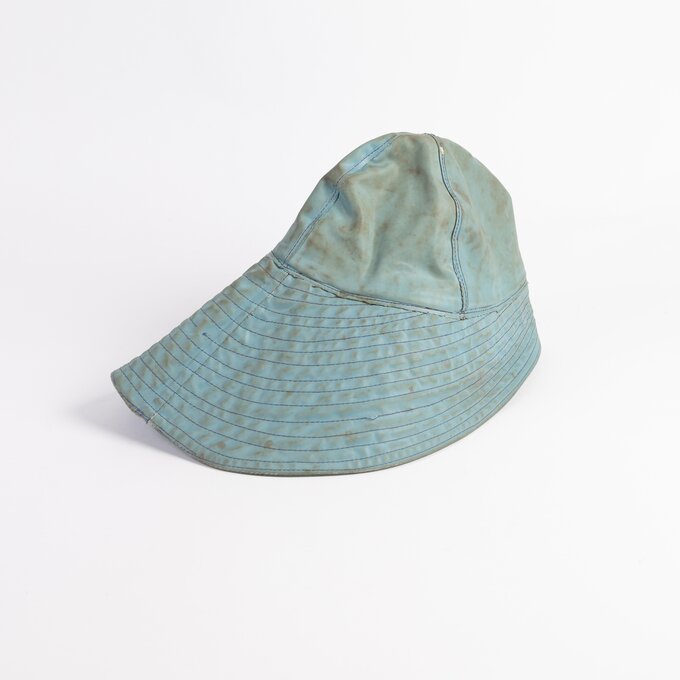Hof der dingen - Sou’wester and piekenoas: trusted tools of Belgian fishermen

“Clothes make the man” – and that certainly applies to our Belgian fishermen. They cannot afford any wardrobe malfunctions and must be prepared for the harsh weather conditions that the North Sea throws at them. To stay warm at sea, fishermen traditionally wore multiple layers of clothing, one on top of the other.
One of the most recognisable elements of their outfit was likely the sou’wester hat— a wide-brimmed, oil-coated and waterproof hat, designed to protect from rain and wind, particularly at sea. It was available in many different colours, although yellow proved to be a popular styling choice. It’s characterised by a brim that is longer in the back than in the front, keeping rainwater from trickling down into their clothing.
Even today, the sou’wester remains part of the traditional uniform worn by the world-famous shrimp fishermen on horseback in Oostduinkerke.
Another essential item in every self-respecting fisherman’s kit: the piekenoas – a traditional fisherman’s knife. Pardon our French, but there’s even an old saying: “A fisherman without a piekenoas is like a prostitute without …. uhm, her most valuable asset." There are kids here – we don’t dare to translate it, but you catch our drift. Putting it slightly less bluntly: a fisherman without a knife is utterly useless.
The piekenoas was a trusted tool for nearly everything: gutting fish, cutting ropes, preparing food, and even saving lives. The name is derived from the symbol engraved on many of these knives — the spade from a deck of cards (in West Flemish: piekenoas).
If you would like to dive deeper into the rich maritime heritage of Belgium’s fishing communities, visit the NAVIGO National Fisheries Museum in Oostduinkerke — the source of both this sou’wester and piekenoas.